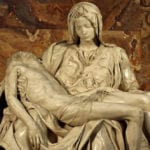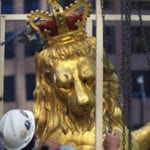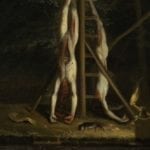 Mysteries
Mysteries  Mysteries
Mysteries  History
History 10 Surprising Stories About the Texas Rangers
 Humans
Humans 10 Philosophers Who Were Driven Mad by Their Own Theories
 Miscellaneous
Miscellaneous 10 Video-Game-Worthy Weapons and Armors from History
 Weird Stuff
Weird Stuff 10 Psychics Who Accurately Predicted Wartime Events
 The Arts
The Arts 10 Pieces of Art Inspired by a Broken Heart
 Health
Health 10 Science Fiction-Sounding New Medical Treatments
 History
History 10 Surprising Facts About the Father of Submarine Warfare
 Space
Space Ten Astonishing New Insights into Alien Worlds
 Weird Stuff
Weird Stuff 10 Bizarre Summer Solstice Rituals Still Practiced Today
 Mysteries
Mysteries Top 10 Haunting Facts About the Ghost Ship MV Alta
 History
History 10 Surprising Stories About the Texas Rangers
 Humans
Humans 10 Philosophers Who Were Driven Mad by Their Own Theories
Who's Behind Listverse?

Jamie Frater
Head Editor
Jamie founded Listverse due to an insatiable desire to share fascinating, obscure, and bizarre facts. He has been a guest speaker on numerous national radio and television stations and is a five time published author.
More About Us Miscellaneous
Miscellaneous 10 Video-Game-Worthy Weapons and Armors from History
 Weird Stuff
Weird Stuff 10 Psychics Who Accurately Predicted Wartime Events
 The Arts
The Arts 10 Pieces of Art Inspired by a Broken Heart
 Health
Health 10 Science Fiction-Sounding New Medical Treatments
 History
History 10 Surprising Facts About the Father of Submarine Warfare
 Space
Space Ten Astonishing New Insights into Alien Worlds
 Weird Stuff
Weird Stuff 10 Bizarre Summer Solstice Rituals Still Practiced Today
10 Bizarre Statues Created From Your Nightmares
Statues have been around almost as long as human civilization. They’re monuments to our achievements, and sometimes they’re achievements in and of themselves. They speak for entire cultures, sometimes after those cultures are long dead. And sometimes, just sometimes, they seem to be spawned directly from the most primal of our deepest, darkest nightmares. These statues and sculptures are unsettling at best, and they’re a glimpse into the bizarre psyches of some of the people we share this planet with.
10Man Attacked By Babies
Vigeland Park
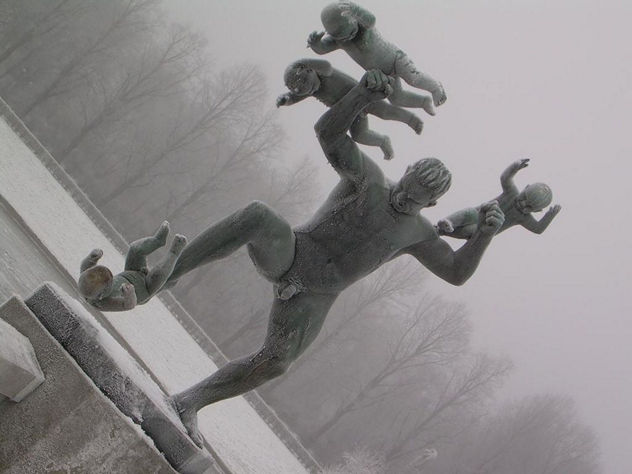
Vigeland Park is a sculpture park in Norway, and has the distinction of being the largest such creation by a single artist. Gustav Vigeland created more than 200 bronze statues for the park, constructing it in the mid-1900s. The idea was to examine the relationships between different groups of people and the circle of life—and some of the results range from weird to creepy to disturbing.
The aforementioned “Man Attacked By Babies” statue is on the park’s bridge. It’s one of 58 sculptures on said bridge; the list also includes one of an unborn baby. The official name of the piece is “Man Chasing Four Geniuses,” and it appears to be a naked man flailing his arms at the babies that have randomly flown at him, while he’s kicking another one.
The tallest statue in the park is the “Monolith”: a massive sculpture carved from one piece of granite, showing crawling, scrambling, naked bodies struggling to ascend to heaven. It’s flanked by other statues that show the progression of life, from “Swarm Of Babies” to “Heap Of Dead Bodies.” At least the park’s creator thought of his youngest visitors, making sure to add a child-sized ferry for those tots who needed some more nightmare fuel.
9Baby-Eating Ogre Of Bern
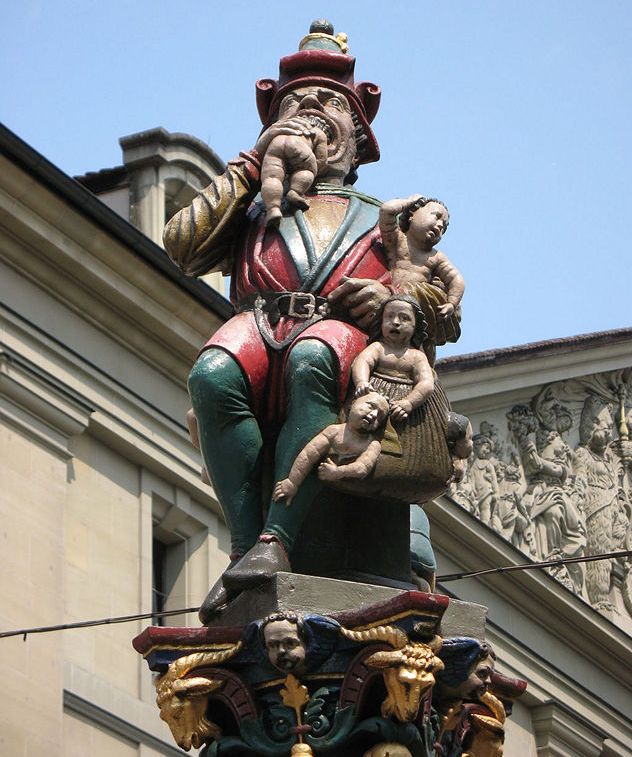
Standing in the middle of Bern, Switzerland, is a fountain sculpture that isn’t just disturbing—it’s a mystery. Although we know it was built in 1546, we don’t know why anyone would build a statue depicting a huge ogre in the middle of eating one baby, with a sack full of others; judging by the terrified expressions on their faces, they know they’re next. There are a few theories as to the meaning of the statue.
One is that it’s supposed to be Khronos—the Greek titan who was told that his children would one day kill him, so he ate them all in a futile attempt to preserve his own life. Another is that the figure is actually Bern’s founder, who had a lifelong rivalry with his younger brother and was said to be driven mad by it—so mad that he took his anger out on the town’s children. (There’s absolutely no official record of anything like this actually happening.) Another theory is that the statue was built as a warning, either reminding the city’s children what happened to those that were naughty, or alternately a warning to the city’s Jews. Whether or not it was originally meant as a warning, we’re pretty sure it’s a successful one.
8Zwerglgarten
The Dwarf Garden
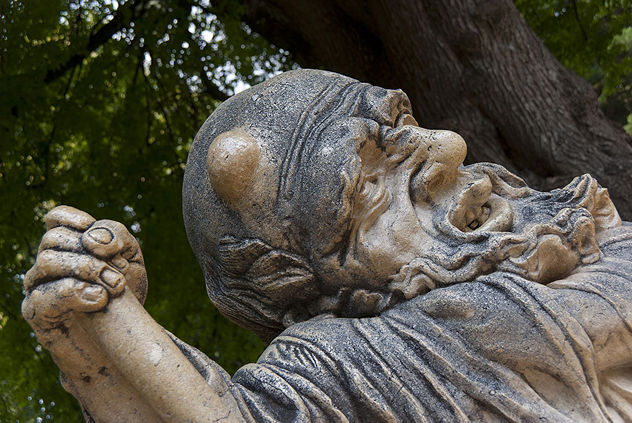
The Zwerglgarten, or Dwarf Garden, is a part of the grounds of Mirabelle Palace in Saltzburg, Austria. Originally called Altenau Palace—in honor of the mistress of the castle’s builder, Prince-Archbishop Wolf Dietrich von Raitenau—the palace is host to a very odd sculpture garden, only part of which can still be seen today. In 1715, the palace was the home of Archbishop Franz Anton Harrach. Like many followers of Baroque fashion and tendencies, Harrach had an obsession with oddities, imperfections, and morbid curiosities.
Anton employed a number of dwarves at the palace, who served as entertainment and jesters. In order to preserve their unique deformities forever, he had a number of them immortalized in statue form. The statutes were placed in the gardens, until they were removed by later owner, Crown Prince Ludwig of Bavaria. The prince was concerned about exposing the delicate sensibilities of his wife and young child to the horrors that were the dwarf statues, so he had them taken away. Now, they’re considered an important part of the city’s history—nine have been returned to the gardens, while others remain lost.
7Victoria’s Way Indian Sculpture Park
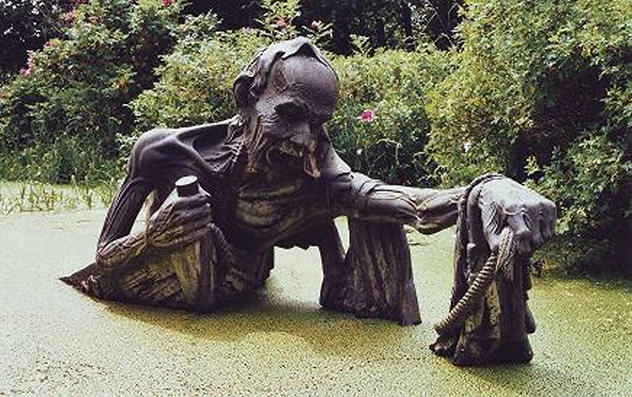
Walking through the lush green fields and forests of Ireland, one of the last things you might expect to stumble upon is a statue of a skeletal Buddha. Or another, of a child crawling out of the ground, trying to free itself from a rotting, skeletal fist. Or a man slicing himself down the middle . . . or how about another skeletal figure, draped in rags, eternally standing in swampy muck, and clearly failing in his struggle to get to the shore?
They’re all among the statues of the Indian Sculpture Park at Victoria’s Way, in County Wicklow, and they’re supposed to be representations of a person’s journey to fulfillment, self-realization, and a state of true being. The 33 black granite statues and three bronzes are on display in a 22-acre park that was designed as a “contemplative space” for individuals to wander, meditate, and reflect upon life. It’s described as a “meta-physical Fun Park,” and the statues are supposed to help visitors reflect on the different states of being that we pass through in life.
6La Pasqualita
Sitting in a shop window in Chihuahua, Mexico, is the form of a young woman dressed in a bridal gown. While there’s nothing remarkable about a mannequin by itself, it’s the eerie, lifelike appearance of this one that has spawned a legion of stories, since her debut on March 25, 1930.
If you look closely at the mannequin, you’ll see a frightening amount of detail. From her real, human hair, her lined hands, and even the veins beneath her skin, the mannequin looks real enough to make most people take a second look. And if its real-girl appearance wasn’t weird enough, she just happens to bear a striking resemblance to the original shop keeper’s deceased daughter. The young woman tragically died on the morning of her wedding, after suffering a poisonous spider bite.
A recent death, and a reappearance of the eerily lifelike mannequin, conveniently dressed in a wedding gown . . . it’s not surprising that legends have sprouted around the figure, claiming that the mannequin is actually the preserved body of the young woman. Her name has long been forgotten, and now she’s simply called “La Pasqualita,” after her mother, shopkeeper Pascuala Esparza. The devastated mother issued statement after statement that the mannequin is just that—a mannequin—but to no avail. She still sits there, and it’s said that she changes position when no one’s looking.
5Black Aggie
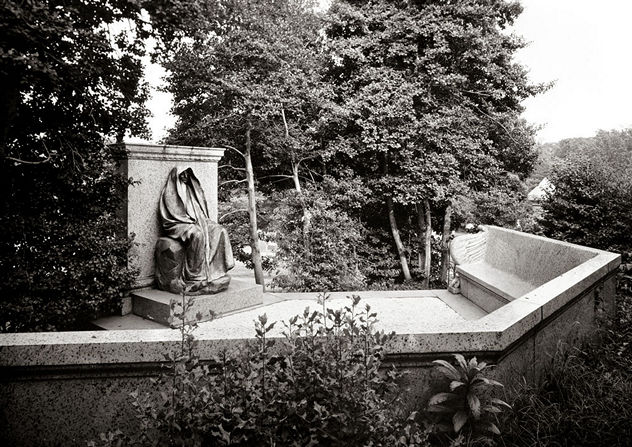
“Black Aggie” is, as her name suggests, a black statue of a woman almost completely wrapped in a shroud. She now sits in the courtyard of the National Courts Building in Washington, DC, after being rejected by the Smithsonian (she was found not to be an authentic work of the artist claimed, Saint-Gaudens). Her story starts long before that, though, with the suicide of a young woman nicknamed “Clover.” Clover was actually Marian Adams—the wife of Henry Adams, and a longtime sufferer from depression—who took her own life in 1885, by drinking photography chemicals. Her husband had her memorialized in a pink granite statue (seen in the above photo) by Augustus Saint-Gaudens. The shrouded figure was called Grief by its sculptor, and The Adams Memorial by the bereaved husband who commissioned it.
Unfortunately, nothing is sacred in this world. The memorial was later duplicated for the grave site of Felix Agnus—sailor, soldier and newspaper editor. He had requested a fitting statue for his grave, and the unscrupulous sculptor presented his grieving widow with an unauthorized duplicate of The Adams Memorial—a duplicate that became known as “Black Aggie.” After Agnus’s widow died, and was also buried near the monument, visitors to the cemetery began to report strange sightings around the statue. People started to say her eyes glowed at night. There is also an unconfirmed legend that a young man, pledging a college fraternity, was told to look into her eyes at midnight—and died of fright.
Ghosts were said to congregate around her (on ground where grass would never grow), and pregnant women who went near her were said to miscarry. The cemetery soon became overwhelmed with ghost hunters and curious visitors. In 1967, “Black Aggie” was donated to the Smithsonian, and was eventually moved to the rear courtyard of the Dolly Madison house.
4Penis Fountain
How can you find Casa Rosso—the largest of Amsterdam’s live sex theatre clubs? Why, look for the giant penis fountain, of course! At least, that used to be a landmark for the red light district’s tourists, until the city’s government made them take it down.
Casa Rosso has a long history of being one of the premier purveyors of S&M shows, adult tricks, and, of course, stripteases for both genders. And the fountain outside its doors leaves as little to the imagination as is left inside. The giant, erect phallus, makes promises that the red light district’s largest bar and theatre goes to great lengths to keep. We’re pretty sure that the image was made into a water-spraying fountain—instead of a plain, boring old statue—on purpose. And if the member in the pictures look small, remember, it’s bigger in real life.
3Bosc De Can Ginebreda
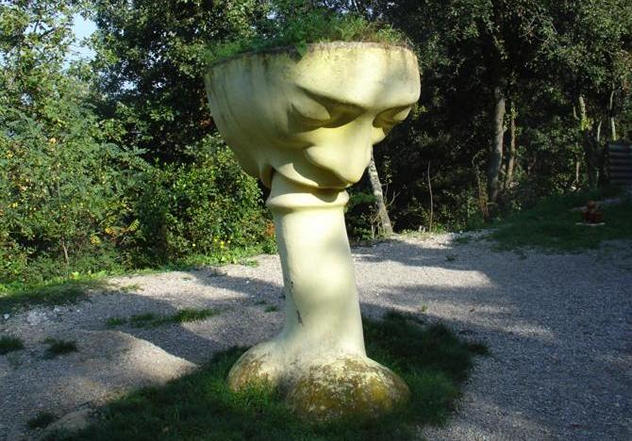
If you’ve ever wanted to walk through a sculpture park featuring a bizarre and very, very disturbing mix of erotica and pornography, with a fairy-tale feel—Bosc de Can Ginebreda is the vacation spot for you. Located in a juniper forest, about two hours north of Barcelona, Spain, the sculpture park is the work of one man: Xicu Cabanyes. His workshop is also on the property, so he’s constantly adding to his collection. It’s estimated that somewhere around 100 people every week come to walk between the giant stone hermaphrodites, sculptures of exaggerated individuals performing various acts, women in the middle of giving birth, and the occasional, non-pornographic piece.
Cabanyes has been at it since the 1970s, and now has more than 100 pieces hidden—and not so hidden—in the forest. There are whole walls made from body casts of real people, there are people with their bits on backwards, and it wouldn’t be complete without a few giant penises. Surreal and placed against a peaceful, beautiful forest backdrop, it has to be seen to be believed. And then probably never forgotten.
2Transi De Rene De Chalon
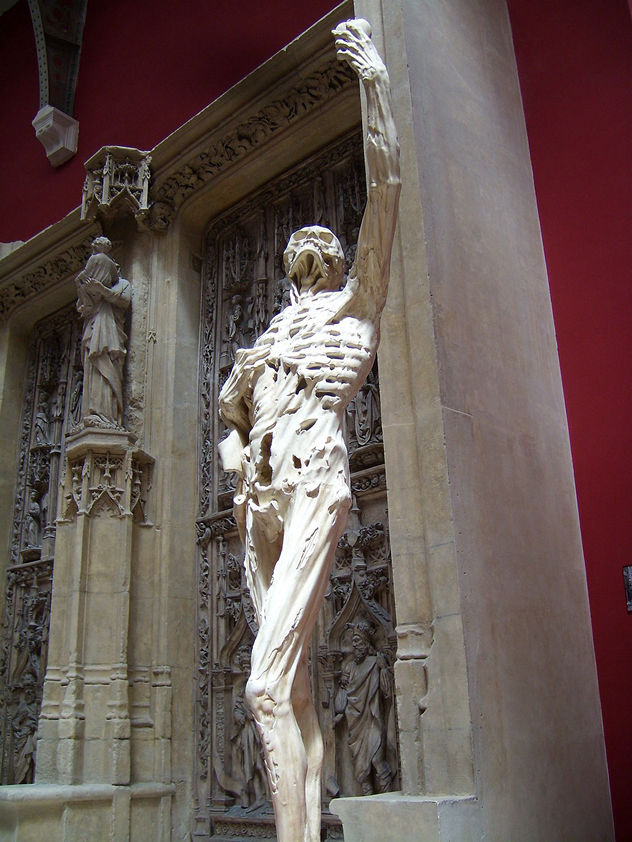
A “transi” is a form of tomb sculpture that became popular in the 14th century. While most earlier tombs tended to show a graceful, beautiful portrayal of the dead, the transi movement of Renaissance art clearly depicted the body in a state of transition from living to decay. At first, the idea of the transi form was one of a sleeping, but still recognizably human form; as the art progressed, many of the figures became much more decayed, often worm-eaten, and in a middle state of decomposition.
Standing in the Saint-Erienne Church of Bar-le-Duc, France, is a monument to the young Rene de Chalon—the Prince of Orange. The prince died in battle in 1544, at the age of 25. The statue on his tomb is one of a life-sized skeleton, clad in hanging rags, one hand clutching his chest, and the other holding his own heart above his head. In fact, the skeleton did once hold the prince’s actual dried heart, but, bizarrely, it went missing during the French Revolution.
1Monument To Enemas
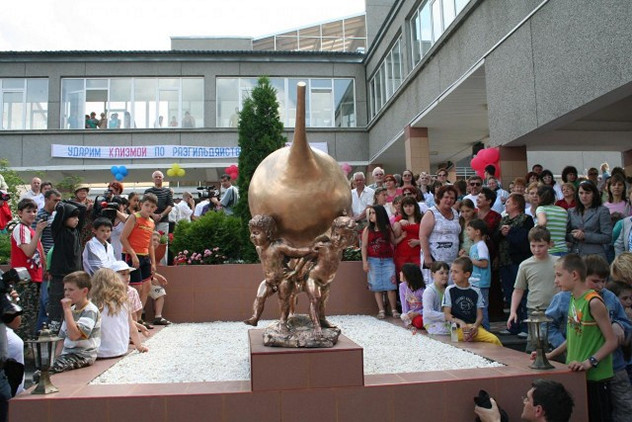
Enemas aren’t something that people tend to think about on a daily basis—and if they do, most won’t admit it. But everyone who walks by the Mashuk Akva-Term spa in Zheleznovodsk, Russia, is going to be thinking about it. In 2008, the spa unveiled a monument to the enema treatment—a treatment that’s very popular at their gastrointestinal-centered spa. The area is known for the cleansing value of their enemas, given with water from natural mineral springs that occur throughout the Caucasus Mountains.
The monument features three angelic cherubs, inspired by Renaissance painter Alessandro Botticelli (although we’re pretty sure that Botticelli never had his little cherubs hold an enema syringe bulb over their heads). The statue cost $42,000, and it was unveiled with a banner that read: “Let’s beat constipation and sloppiness with enemas.”
+Bomarzo
The Park of Monsters
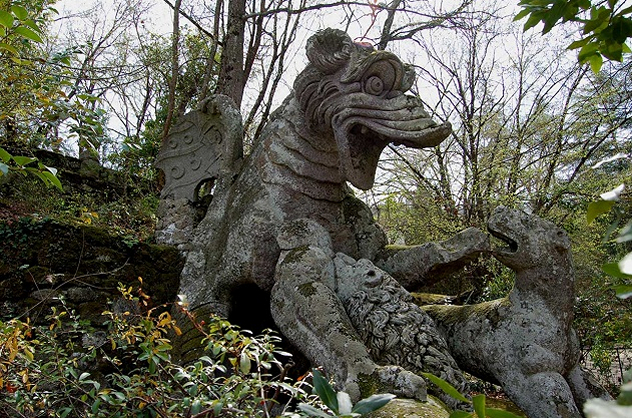
The Park of Monsters is as sad and poignant as it is bizarre. Located just outside of Bomarzo, Italy, this garden and sculpture park contains some horrific images. Dragons are poised to swallow their terrified prey, an elephant carries the body of a dead soldier, the Greek monster Echidna—part woman, part snake—waits in eternal silence with a pair of lions. All throughout the park are grotesque faces, mouths opened in a silent scream . . . or waiting to swallow visitors whole.
The whole thing was commissioned and created by a nobleman, named Duke Pierfrancesco Orsini, also known simply as “Vicino.” Vicino was a soldier, but war was not kind to him. As an officer in 1550s Italy, he saw his best friend die in battle and spent time as a prisoner of war. He returned home just in time to see his beloved wife die. So he retreated to his family’s land, where he constructed the park of monsters that still stands today. There’s no record of whom many of the statues are supposed to depict, or why he decided to put them in the garden.
At the entrance of the garden, though, is this message, carved in stone and waiting for everyone who enters: “You who enter this place, observe it piece by piece and tell me afterwards whether so many marvels were created for deception or purely for art.” The words come from a soul wrought with pain and sorrow, and to this day it remains unclear whether he was speaking of the horrific marvels within his garden, or about the marvels he had seen and carried with him to his death.

